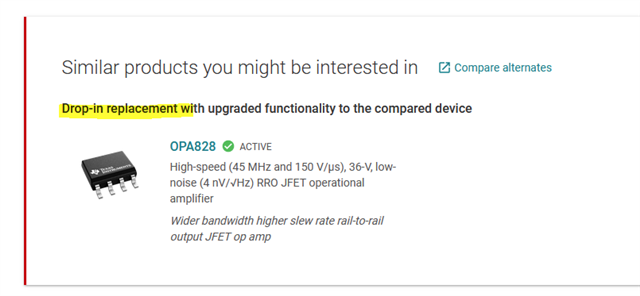Other Parts Discussed in Thread: OPA627, OPA140, OPA2828, OPA827
Hello,
We have legacy TIA for photodiode that was using OPA627. TI lists OPA828 as being a "drop-in" replacement for it however after just swapping OPA627 to OPA828 device does not function as intended in fact we don't see any output signal from the device. Another variation of same device uses AD8610A as actual drop-in replacement and it does work well.
This is a repair project of a costly legacy hardware and unfortunately I don't have a schematics for it.
However traced it partially and here is how OPA627 is being used. Diode is biased with 5V and OPA627 is powered with +/- 5V.
Please advise how OPA627 can be replaced with OPA828. Thank you.


